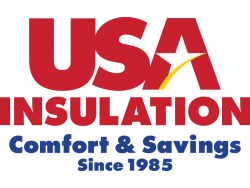Winter brings warm and fuzzy feelings of time spent with family and special holiday memories you can't get enough of but, unfortunately, there's another side to winter that we're all too familiar with—the unrelenting, freezing weather. If you've ever been in your home and muttered under your breath, "why is it so cold?!" this blog is for you.
The science of heat flow
As winter continues to creep in, homeowners with insufficient insulation will begin to experience the same frustrations that happen every year—cold walls that force your heating system into overdrive but still leave you freezing. And, of course, painfully high energy bills. To shed some light on why this happens and what you can do to fix it, it's important to understand the basics: how heat flow affects a home without sufficient insulation.
Here we'll go over the basic mechanisms of heat flow: conduction, convection, and radiation.
Conduction
With conduction, heat flow occurs between two solid objects that are in direct contact with each other. Insulation serves as resistance to conduction and is the first line of defense for your home, preventing it from getting too hot, or in this case, your walls from getting too cold.
Convection
Convection transfers heat through liquids and gases via circulation. When it comes to your home, as cold air enters and mixes with warmer air, the heat is transferred to cooler air and drops the overall room temperature. With properly installed insulation, there will be no gaps for unconditioned air to leak through to bring the overall temperature down through convection.
Radiation
Radiant heat travels from a heating source directly to an object, absorbing its energy and doesn't rely on contact between the heat source and heated object like conduction. However, while insulation doesn't do much to prevent radiant heat flow, it can certainly help to keep the warmth generated by radiant heat inside your home.
The solution: USA Premium Foam® Insulation
During winter, your home actually becomes warmer in comparison to the outside (even though it may not feel like it), creating a temperature difference that drives heat to escape into cooler, uninsulated parts of your home. The solution? Insulating your walls with USA Premium Foam insulation to provide the most resistance to heat flow. Insulation resistance is measured in R-value, reflecting the effectiveness and efficiency of any insulation material.
With USA Premium Foam Insulation, you're getting the best R-value in the industry! Our proprietary insulation has a 35% higher R-value than other types of insulation material on the market. By targeting key areas in your home with our premium foam insulation such as, attics, garages, and basements, your home will receive an energy efficiency boost, walls will no longer be cold and your energy bills much lower.
Contact us today for a FREE in-home consultation to start living your life free of cold walls and high energy bills! You won't regret it.
USA Insulation is expanding. If you're interested in providing energy efficiency and comfort to your surrounding community, contact our USA insulation franchise development professionals today.



